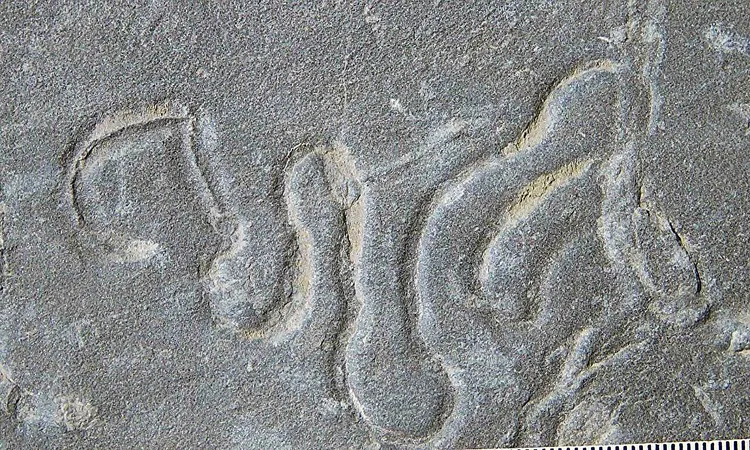
Ancient Tracks Challenge the Cambrian Explosion Theory: A Major Evolutionary Rewrite?
2025-07-16
Author: Olivia
A Stunning Discovery Under the Sea
What if those seemingly random squiggles etched into ancient seafloor mud were more than mere doodles? New research suggests these complex tracks—dating back nearly 550 million years—are signs of early life, movements made by primitive animals long before the famed Cambrian Explosion transformed Earth's biodiversity.
Revealing the Prehistoric Movement of Life
Analysis of 170 trace fossils—preserved marks left by ancient creatures—reveals a far richer narrative of evolutionary advancement than previously believed. Scientists, led by paleontologist Dr. Zekun Wang from the Natural History Museum in London, propose that advanced, sensor-equipped organisms were gliding over the seabed a full 10 million years before the Cambrian Explosion began.
Evolution's Quiet Prelude Before the Big Bang
Traditionally viewed as an abrupt evolutionary event bursting with new forms of life, the Cambrian Explosion might actually have roots in the quieter Ediacaran Period, which lasted from 635 to 539 million years ago. The latest findings indicate that vital traits like directional movement and elongated bodies developed during this earlier period.
Phases of Evolutionary Complexity
Dr. Wang's team categorized early track formations into three evolutionary phases that showcase increasing anatomical complexity. Initial tracks, which twist awkwardly, hint at creatures with limited mobility, while later smooth trails suggest better coordination and the ability to glide efficiently—similar to modern worms.
Understanding How Ancient Animals Moved
The research further identifies how these ancient organisms maneuvered along the ocean floor. Utilizing mathematical modeling alongside traditional ichnology, scientists decoded the movement patterns in the sediment, discernibly separating between creatures that moved with purpose versus those that aimlessly wandered.
A Gradual Evolution of Mobility
Not just a tale of hard shells and skeletons, this study points to mobility as a crucial evolutionary milestone. Animals adapted to move more efficiently, from awkward slogs to gliding motions, fundamentally altering their ecosystems even before the Cambrian Explosion.
Implications for Earth's Evolutionary Narrative
These findings urge a re-evaluation of evolutionary timelines and suggest that behavioral advancements may have set the stage for later physical evolution. The presence of active burrowers hints at profound ecological transformations, potentially reshaping marine environments long before visible signs of complex life appeared.
Future Research Aims to Uncover More
With plans for advanced imaging techniques and geochemical probing of ancient burrows, researchers are eager to unearth more secrets from our planet's distant past. Early mobility may have acted as a catalyst, breathing life into ecosystems and helping some lineages flourish while others faded into oblivion.
Conclusion: A New Chapter in Evolutionary History
This groundbreaking study, published in the *Proceedings of the Royal Society B*, not only challenges established views about the Cambrian Explosion but also emphasizes the intricate relationship between behavior, environment, and evolutionary opportunities. As science delves deeper, the quiet movements of ancient life remind us that the slow buildup often paves the way for what we perceive as revolutionary change.









 Brasil (PT)
Brasil (PT)
 Canada (EN)
Canada (EN)
 Chile (ES)
Chile (ES)
 Česko (CS)
Česko (CS)
 대한민국 (KO)
대한민국 (KO)
 España (ES)
España (ES)
 France (FR)
France (FR)
 Hong Kong (EN)
Hong Kong (EN)
 Italia (IT)
Italia (IT)
 日本 (JA)
日本 (JA)
 Magyarország (HU)
Magyarország (HU)
 Norge (NO)
Norge (NO)
 Polska (PL)
Polska (PL)
 Schweiz (DE)
Schweiz (DE)
 Singapore (EN)
Singapore (EN)
 Sverige (SV)
Sverige (SV)
 Suomi (FI)
Suomi (FI)
 Türkiye (TR)
Türkiye (TR)
 الإمارات العربية المتحدة (AR)
الإمارات العربية المتحدة (AR)